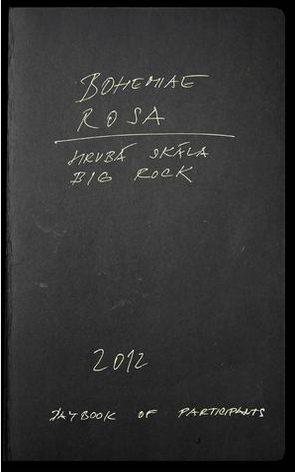
Daybook of participants
s e j n b o h e m i ae r o s a
S i t e B o d y E x p l o r a t i o n
Bohemian Paradise - Hruba Skala - The Czech Republic
International Interdisciplinary Open-Air Workshop for dancers and artists exploring the relation among body, art and landscape
led by Frank van de Ven, Milos Sejn / Václav Cílek as a guest
Suported by Bohemiae Rosa Foundation, Ministery of Culture Czech Republic - European geopark UNESCO Bohemian
Paradise - Bohemian Paradise National Reserve
Since 1995 Milos Sejn and Frank van de Ven have co-operated in their bi-annual interdisciplinary open-air Body-Site-Exploration projects in various National & Cultural Reserves in the Czech Republic (Kokorin Valley, Plasy Monastery, Bohemian Karst, Bechyne Monastery with the Luznice River, Bohemian Paradise, Sumava and Krkonose Mountains, Kuks Spa) known as the Bohemiae Rosa Project.
This 10th edition of the Bohemiae Rosa Project, which will take place in an area known from the end of 19th century as „Bohemian Paradise“, will evolve in the famous historical landscape with figurative rocks, caves, valleys, brooks, forests, groves and meadows. Walking and working in the Bohemian Paradise, we investigate the historical relation of Body and Landscape and its signification and relation to contemporary Performing Arts.
The program will include:
• MB -(mind/body, muscles/bones) dance training
• practice of and reflection on physical and mental training
• walking and wandering, silent walk, pilgrimage and nocturnal journeys
• various modes of experiencing body, movement and landscape
• investigating divergent senses of space and time
• peripatetic records, drawing, writing, immediate contact with surroundings
• mental topography of a location, myth, archaic mind and genius loci
• geology, archaeology and history of the Bohemian Paradise as a model of self: layers, vertical connections and labyrinths
An integral part of the workshop will be the individual artistic projects that participants are encouraged to formulate and work on for about 1 to 2 hours a day. (in the fields architecture, landscape art, dance, performance, photography, sculpture, theatre, visual arts, biology and natural history). The workshop leaders are available to guide and support these processes.
The body is a landscape in itself moving within the larger frame of the given surrounding environment. The vertical and horizontal layering of the (historical) landscape invites us to reflect upon our own layers and connections of self and imagination.
Participants profile: for artists and advanced students working in the fields of performance, dance, landscape art, sculpture, photography, architecture, theatre, visual arts, biology and natural history.
26
August - 01 September 2012, arrival evening of 25 August
Meeting Place: 511 01 Karlovice - Roudný 31 (near Turnov), Czech Republic
GPS
50º 33‘ 23.34“ N 15º 14‘9.90“ E
http://www.panoramio.com/map/#lt=50.556484&ln=15.236084&z=4&k=2
http://www.panoramio.com/photo/22890158
Accessible by train from Prague Main station - Turnov - Sedmihorky or by bus from Prague Černý Most (direction to Harrachov, cross-station Turnov and after that direction Jičín (by train or bus), station Sedmihorky – the second station!) or by car from Prague, cross Turnov and after that direction Jičín).
The number of participants is limited. We recommend early applications.
Bring sleeping bag, sheets, work/yoga mat, backpack for day hikes, raincoat and hiking boots.
There will be space to put up tents, bring one if you want.
All participants must have a personal insurance and must provide a copy of this before start of the project.
For artists and advanced students working in the fields of performance, dance, landscape art, sculpture, photography, architecture, theatre, visual arts, biology and natural history.
No
previous (dance) training is necessary but the workshop will be physically and
mentally
demanding,
therefore
a good overall condition is required.
APPLICATION
To apply send name, a short c.v. and a motivation letter to
Frank van de Ven
frank.bwa@xs4all.nl
or
Milos Sejn
ms@sejn.cz.

From
Bohemiae Rosa Project – September 11
2003 Bohemiae Rosa V
Bohemian Paradise
video
E X T E N D E D I N F O R M A T I O N
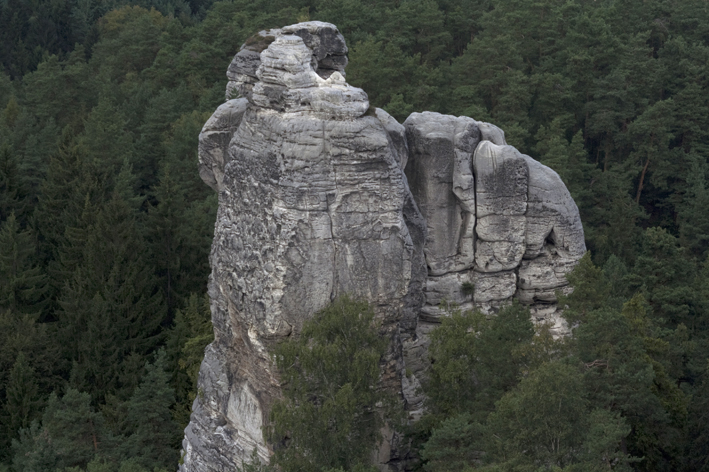
Bohemian Paradise -
Hrubá Skála (The Big Rock) - Czech Republic
Bohemian Paradise (Czech
Republic)
Radek Mikulas,
Jirí Adamovic
and Lenka Soltysova
Name(s) of the
sandstone region (incl.
synonyms): Bohemian Paradise, Cesky raj, Bohmisches
Paradies
Geographical location: northern Bohemia
Central coordinates: 50035'N, 15°08'E
The nearest large cities: Turnov, Jicin,
Liberec, Prague Area: 181.5 km2
Min. and max. altitude: 240 m (Zabakor Pond near Turnov) - 744 m (Kozakov
Hill near Turnov)
Geology
Quartzose sandstones largely exposed in the Bohemian Paradise pertain to
another large clastic wedge-shaped body, different from the bodies in the
Lusatian region. It is Upper Turonian to Lower Coniacian in age, max. 160 m
thick, and had the form of a giant river delta entering a shallow sea. The
sandstones, ranked to the Teplice Formation, are medium- to coarse-grained,
mostly with no signs of cyclic arrangement and no continuous conglomerate beds.
The typical sedimentary structure is giantscale cross bedding and delta foresets.
At depth, quartzose sandstones are underlain by fine-grained calcareous
sandstones of Middle Turonian age with a much lower relief-forming potential.
Near the present northeastern limit of the basin, along the Lusatian Fault zone,
morphologically prominent quartzose sandstones of Cenomanian age (Peruc-Korycany
Formation) are exposed in the direct hangingwall of Permian basement rocks.
These sandstones in narrow blocks are strongly fractured, with tilted or even
overturned strata due to the tectonic drag along the northeast-dipping fault
plane. The Lusatian Fault zone is also the site of intensive fault-related
silicification of sandstone (Suche skaly Cliffs, Kozakov Hill) and some of the
youngest volcanic effusions in northern Bohemia (Late Miocene to Pliocene
basanites). Volcanic occurrences (dykes east-west, stocks) in the rest of the
area are somewhat older, subvolcanic in character, and basaltic in composition.
Some of them form prominent landmarks (Trosky Hill, vysker Hill). Locally
intensive ferruginization of sandstone is associated with basaltic dykes or
major faults. Several smaller-scale tectonic blocks can be distinguished in the
central part of the area but movements on the faults rarely exceed a few tens of
metres.
Geomorphology
The sandstone landscape of the Bohemian Paradise is
developed as a set of 10 independent rock cities with wall heights of max. 60 m.
Individual localities and districts comprise the Hruba Skala Rock City, Apolena
Rock City, Pffhrazy area, Plakanek Valley, Suche skaty Cliffs, Prachovske skaly
Cliffs, Klokocske and Betlemske
skaly Cliffs, Sokol Hill, and Kozakov Hill. These rock cities are isolated but
constitute an integral complex with a preserved, unique nature of universal
scientific and conservation significance. The macrorelief is highly variegated -
it forms a mixture of valleys, basins and highlands. Stream channels strongly
influenced the landscape and mesorelief formation. The sandstone block was
deeply eroded and incised by the Jizera River and its tributaries during the
Pleistocene. Slope deposits originated during the late Pleistocene through to
the Holocene. The individual localities show excellent examples of sandstone
rock cities, with isolated pillars up to 60 m high. Microrelief is extremely
rich, showing all of the known forms of the temperate zone; pitted surfaces,
ledges and bioerosioninduced forms prevail. Ferruginization of sandstone also
gave rise to specific forms.
Climate
A moderately warm area. Average annual temperatures 7-8 0(; however,
inversion valleys and gorges are significantly colder. Precipitation: 621-692 mm
per year.
Flora and
vegetation
The flora of the Bohemian Paradise can be roughly divided in two different
groups depending on the geological bedrock, i.e. acidophilous species occurring
on acid quartzose sandstones, and basiphilous species occurring on calcareous
sandstones, marlstones and volcanic rocks. Pine forests with dominant Pinus
sylvestris, on acid sandstone plateaus, usually have a poor undergrowth
comprising Vaccinium myrtillus, V vitis-idaea, Cal/una vulgaris and Pteridium
aquilinum. A species-rich flora can be found in shady ravines and wet,
afforested valleys with streams: Blechnum spicant, Lycopodium clava tum, Crepis
paludosa, Equisetum sylvaticum and E. telmateia are typical species for forest
wetlands of the Bohemian Paradise. Valleys with a system of ponds and
watercourses, adjacent wet meadows as well as rock walls belong to the most
valuable areas where a variety of biotopes and related plant species can be
found. In the rest of the peatland areas and in wetlands Orosera rotundifolia,
Menyanthes trifoliata, Calla palustris, Viola palustris, Eriophorum gracile, E.
angustifolium and E. latifolium, Thelypteris palustris, Epipactis palustris,
Liparis loeselii and various species of the genus Carex are found. In the
territory of the Bohemian Paradise, basiphilous vegetation relates to basalt
eruptives, bedrock and outcrops of marly sandstones. On the steep slopes of the
Jizera River meander are herb-rich and calciphilous beech forests with the
occurrence of fir and in their undergrowth Cephalanthera damasonium,
Corallorhiza trifida, Cypripedium calceolus, Epipactis helleborine, Sesleria
caerulea. Characteristic species of the thermophilous dry grasslands on
deforested slopes are Gentiana cruciata, Gentianopsis ciliata, Gentianella
amarel/a, Aster amellus and Anemone sylvestris.
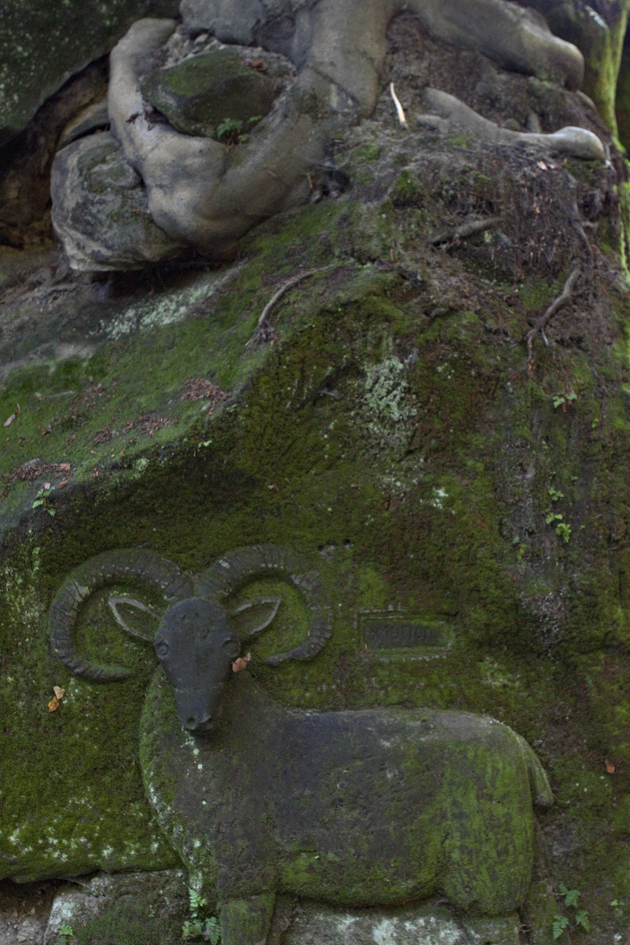
Fauna
Apart from a close dependence on plant communities, vertebrates as well as
invertebrates use the high habitat diversity of sandstone rock formations. Among
the characteristic species for this area are the birds - eagle owl (Bubo bubo),
jackdaw (Corvus monedula), kestrel (Falco tinnunculus), raven (Corvus corax) (since
the 1980's) and, in coniferous forests, goldcrest (Regulus regulus) and night
jar (Caprimulgus europaeus). The peregrine falcon (Falco peregrinus), once a
traditional bird of the region, is now absent. Among the mammals are badger (Meles
meles), stone marten (Martes foina) and the lesser horseshoe bat (Rhinolophus
hipposideros). Among the invertebrates are the scarlet tiger moth (Cal/imorpha
dominula), which is connected with inversion sites, among Neuroptera the antlion
(Myrmeleon formicarius), among tiger beetles Cicindela sylvatica, C. sylvicola
and C campestris. Among other beetles are the xylophagous species of longhorn
beetles - Acanthocinus aedi/is, Spondylis buprestoides, Asemum stiatum, Rhagium
inquisitor, Arhopalus rusticus and
Callidium violaceum. Some beetle species develop in the old pine stumps, for example click-beetles of the genus Ampedus or one of the region's biggest click-beetles Stenagostus rufus. Under the bark of old dead pine trees, is a locally rare beetle Pytho depressus. Caves are used by the herald moth (Scoliopteryx libatnx) and the spider Meta menardi.
Characteristic of broad-leaved and mixed forests are the birds - black woodpecker (Oryocopus martius), crested tit (Parus cristatus), stock dove (Columba oenas), black stork (Ciconia nigra), pied flycatcher (Ficedula hypoleuca), wood warbler (Phylloscopus sibilatrix), tawny owl (Strix aluco), great spotted woodpecker (Oendrocopos major), the mammals - bank vole (Clethrionomys glareolus), the amphibians - fire salamander (Salamandra salamandra) (in the northern part), the molluscs - Helicigona lapicida, the beetles - Sinodendron cylindricum and Platycerus caprea, the big ground beetles Carabus coriaceus, C. intricatus and C. problematicus, and the Tau emperor moth (Aglia tau). There is an interesting occurrence of sub-montane to montane species in the inversion ravines of the Valdstejn Ridge, for example, the ground beetles Carabus linnaei, C. glabratus and Cychrus attenuatus. In dead tree trunks, there is also a big longhorn beetle Prionus coriarius and on forest roads a rare longhorn beetle Saphanus piceus can be found.
Characteristic of the various wetlands including ponds, watercourses and floodplain forests with prevailing oak (Quercus spp.) and wet meadows are the birds - grey heron (Ardea cinerea), grasshopper warbler (Locustella naevia), little grebe (Tachybaptus ruficollis), marsh harrier (Circus aeruginosus), water rail (Ral/us aquaticus), reed bunting (Emberiza schoeniC/us), grey wagtail (Motacilla cinerea), penduline tit (Remiz pendulinus), great grey shrike (Lanius excubitor), lesser spotted woodpecker (Oendrocopus minor), kingfisher (Alcedo atthis), dipper (Cinc/us cinclus), great crested grebe (Podiceps cristatus), mute swan (Cygnus olor), fieldfare (Turdus pilaris), whinchat (Saxicola rubetra), little ringed plover (Charadrius dubius), lapwing (Vanellus vanellus), the reptiles - viviparous lizard (Zootoca vivipara) and grass snake (Natrix natrix) are common species in many places. The common crayfish (Astacus astacus) and swan mussel (Anodonta cygnea) belong to important endangered species with locally preserved populations. In the 1990s, the return of the otter (Lutra lutra) was confirmed. The grey heron (Ardea cinerea) is the only newly nesting species in the area, and in the year 2000, surprisingly the white-tailed eagle (Haliaeetus albicilla) nested here as well.
Characteristic of dry and warm habitats are the birds - redbacked shrike (Lanius col/urio) and stonechat (Saxicola torquata) along with many thermophilous beetle species that reach this area from the lowland areas in the south, e.g. Potosia cuprea and Liocola lugubris, Trichodes apiarius, Agapanthia intermedia and Phytoecia coerulescens. Recently the swallowtail butterfly (Papilio machaon) has been recorded more frequently. The wasp spider (Argiope bruennichl) is a new species for the Bohemian Paradise first recorded in the mid 1980s and found in both dry and wet meadows.
Protected
areas
The Bohemian Paradise is the oldest Protected Landscape Area (PLA) in the
former Czechoslovakia, established on the 1 st of March 1955. After recent
enlargement, the PLA covers a total of 181.5 km2 Within the PLA, there are many
small-scale protected areas (nature reserves and monuments), e.g. Hruboskalsko,
Podtrosecka udell, Príhrazske
skaly, Prachovske skaly, Trosky. There are several Natura 2000 sites in the
area: Prulom Jizery u Rakous SAC, Podtrosecka udell SAC, Príhrazske
skaly SAC a.o. Sandstones of the Bohemian Paradise constitute the core of the
first European Geopark of UNESCO in the Czech territory, established in 2005.
Main
conservation efforts
Provision of adequate and high-quality protection of the natural and
landscape environment in an undivided area, In a comprehensive and balanced
range of natural, semi-natural and man-made ecosystems which fully represent the
landscape of the Bohemian Paradise, (ii) active, focused and sustainable care
for the natural, landscape and cultural environment aiming to maintain
biological diversity and control invasive species, (iii) preservation and
optimization of the landscape potential for sustainable tourism and adequate
commercial utilization of the landscape of the Bohemian Paradise, (iv) the
development of a unified, environmentally friendly method of management and
utilization of the landscape while preserving the character of the landscape and
the high potential of natural and cultural values.
Basic literature
Balatka (1986), Coubal (1990), Mikuláš. et al. (2001), Mertlík et al.
(2002), Mrkáček et al. (2000), Slavík (1977), Uličný (2001).
Contacts and more
information
http://www.ceskyraj.ochranaprirody.cz.
http://www.geoparkceskyraj.cz
Excerpt from: Sandstone Landscapes, Handrij Härtel, Václav Cílek, Tomáš Herben, Andrew Jackson, Rendel Williams (eds.), ACADEMIA in collaboration with Bohemian Switzerland National Park Administration and Royal Botanic Gardens Kew, Prague 2007
UNESCO Geopark Bohemian Paradise
More
about Hruba Skala (The Big Rock)
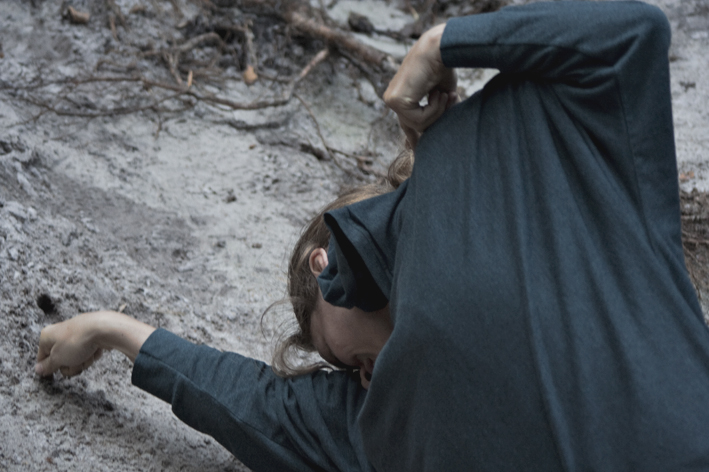

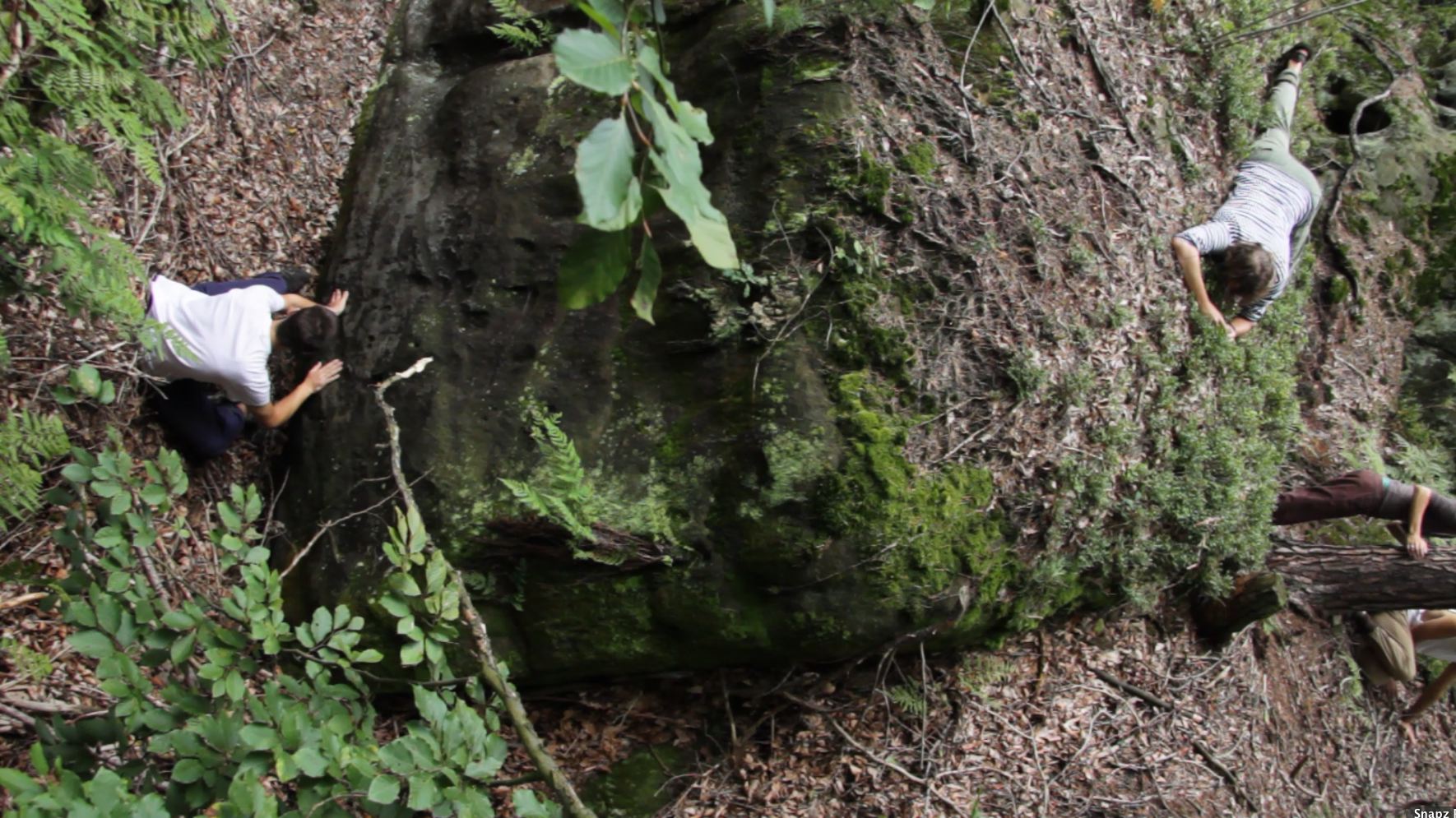
From
Bohemiae Rosa Project – September 11
BIOGRAPHIES
Milos Sejn
works in the fields of visual art, performance and study of visual perception.
From the beginning of the 1960s he took pictures, drew, collected and described
his observations of nature during his wanderings through the Czech landscape.
Currently he teaches mixed media and the relationship of nature and art as
intrinsic needs of the mind, and focuses
on immediate creative possibilities, based upon relations between historical
humanized landscapes and intact nature.
CD ROMs: Colorvm Natvrae Varietas (Centrum for Culture and Communication in
Budapest c3, 2000); Make Your Own Island/Make Your Own Forest (Utrecht School of
the Arts, Institute for postgraduate and professional higher education in the
Arts, 2001); Books:
Being
Landscape, 2010
Frank van de Ven
is a dancer and choreographer who spend his formative years in Japan working
with Min Tanaka and the Maijuku Performance Company. In 1993 he founded together
with Katerina Bakatsaki
'Body Weather Amsterdam', a platform for training and performance. Since
1995 he conducts with Milos Sejn the interdisciplinary Bohemiae Rosa Project,
connecting body and landscape with art, geology and architecture. Interest in
dance and theory led to the 'How to make yourself a Dancing Body Without Organs'
Project. Together with Peter Snow (Monash University) he performs the famed
Thought/Action Improvisations. An ongoing collaboration exists with
musician Daniel Schorno, artistic director of Steim Amsterdam.
Films
(video and 16mm): Dancing Plasy Times 8, CI-VIT, LOM and NOUGHTS.
Václav Cílek
is a Quaternary geologist who specializes in landscape development, past changes
and interactions between prehistoric cultures and the environment. He teaches
students of cultural anthropology at Charles University, CR, Prague and
North-western University in Evanston, USA. He is interested in the narrow area
where archaic mind is confronted with contemporary culture.
Dictionary definitions
*site n., pl. -s [Latin situs "place, position", from sinere "to leave, place, lay"] 1. the actual or planned location 2 the place or scene of something (a camp site) / site vt., to place on a site or in position: locate
*body n., pl. -ies [OE, bodig, cask] 1. the whole physical substance of a man, animal or plant 2. the trunk of a man or animal 3. a corpse 4. [Colloq.] a person 5. a distinct mass [a body of water] 6. a distinct group of people or things 7. the main part 8. substance or consistency, as of liquid 9. richness of flavor
*landscape n., pl. -s [Dutsch landschap, from land + -schap "-ship"] 1. a picture of natural inland scenery 2. a portion of land that the eye can see in one glance
*wander vb., wan-dered, wan-der-ing [OE, wandrian] 1. to move about aimlessly or without a fixed course or goal: ramble 2a to deviate (as from a course): stray 2b to go astray morally: err 2c to lose normal mental contact (as delirium or madness)
*walk n., pl. -s [vb OE, wealkan "to roll, toss"] 1. a going on foot (go for a walk) 2. a place, path, or course for walking 3. distance to be walked 4a manner of living 4b social or economic status (various walks of life) 5a manner of walking 5b a gait of a four-footed animal in which there are always at least two feet on the ground